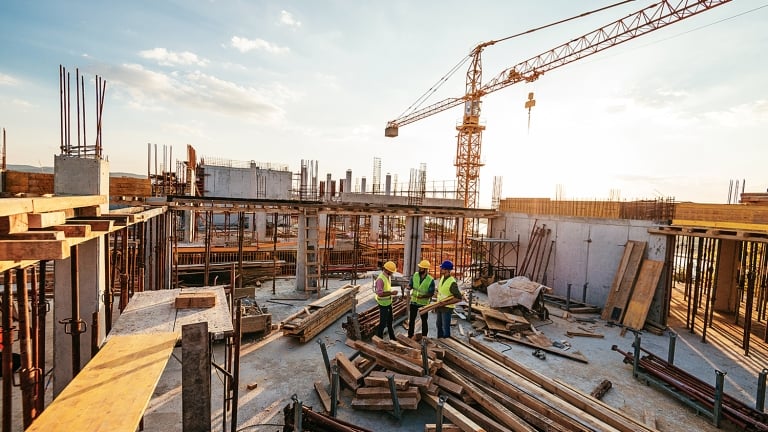Circular Design & Construction Guidelines

The City of New York (the “City”) is set to play a powerful role in decarbonizing the built environment and scaling the clean construction industry by enabling innovative solutions, facilitating bold policies, and operating programs to overcome implementation challenges in tangible ways.
As part of the City’s decarbonization efforts, NYCEDC is implementing Circular Design & Construction Guidelines (the “Guidelines”), an operational guide to reduce waste and embodied carbon in NYC’s built environment.
Building a Circular New York City
Milestone
50%
NYC's planned carbon emission reduction
NYC aims to reduce embodied carbon emissions (those locked in place as soon as a building is constructed) for new buildings, infrastructure, and major retrofits by 50 percent by 2033 (PlaNYC 2023). Currently, materials, including their extraction, transport, and manufacturing, represent ~70 percent of all embodied carbon emissions in the built environment and construction and demolition (C&D) waste accounts for more than 60 percent of NYC’s solid waste stream.
In a linear economy, materials are extracted, made into products, and ultimately disposed as waste. A circular economy shifts from this “take-make-waste" system and supports a more sustainable future in which materials are not wasted and are kept in their highest and best use through reuse, recycling, and planning for longevity. This approach maximizes the economic value of decisions made in design and construction while improving sustainability outcomes.
Embracing circular construction and creating a local interconnected circular material network will have the added benefits of job creation; diversifying supply chains, thereby reducing risk and delays; reducing negative transportation impacts such as air quality and traffic; and conserving natural resources.

Circular Design & Construction Guidelines
NYCEDC will use the Guidelines across all new capital projects to decarbonize buildings.
The Guidelines will:
-
Reduce embodied carbon and waste within NYCEDC capital projects
-
Develop knowledge and capacity across industry stakeholders
-
Drive demand for cleaner and more circular design and construction across NYC
The Guidelines contain the following resources:
- Circularity goals for project teams to work towards during design and construction
- Required deliverables to document project teams’ approach to circularity and track progress throughout a project’s lifecycle
- A series of strategies to guide project teams towards compliance
Putting the Guidelines in Action: SPARC Kips Bay

Milestone
26K+
Metric tons of carbon reduced at SPARC Kips Bay
As part of the Green Economy Action Plan, NYCEDC announced that SPARC Kips Bay, a nearly 2-million square foot, first-of-its-kind innovation, jobs, and education center in one of the nation’s premiere life sciences clusters, will be the first large project to implement the Circular Design & Construction Guidelines. By using innovative circular construction methods of public sites within the campus, SPARC Kips Bay will reduce 26,400 metric tons of carbon emissions – equivalent to removing nearly 5,800 cars from the road. This project will serve as an exemplar for other large public and private projects.
If you have questions, please email:

